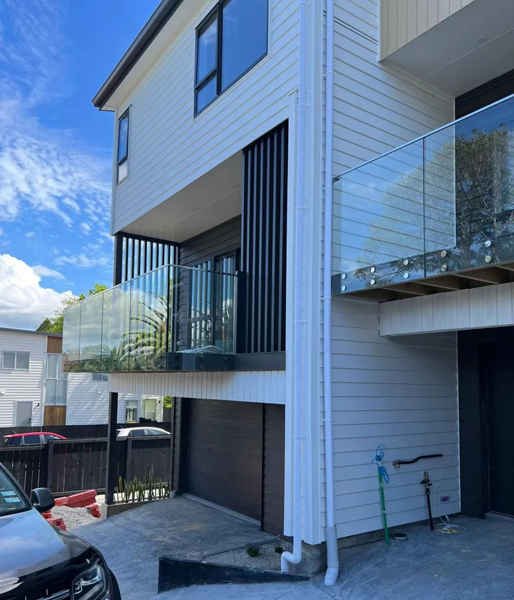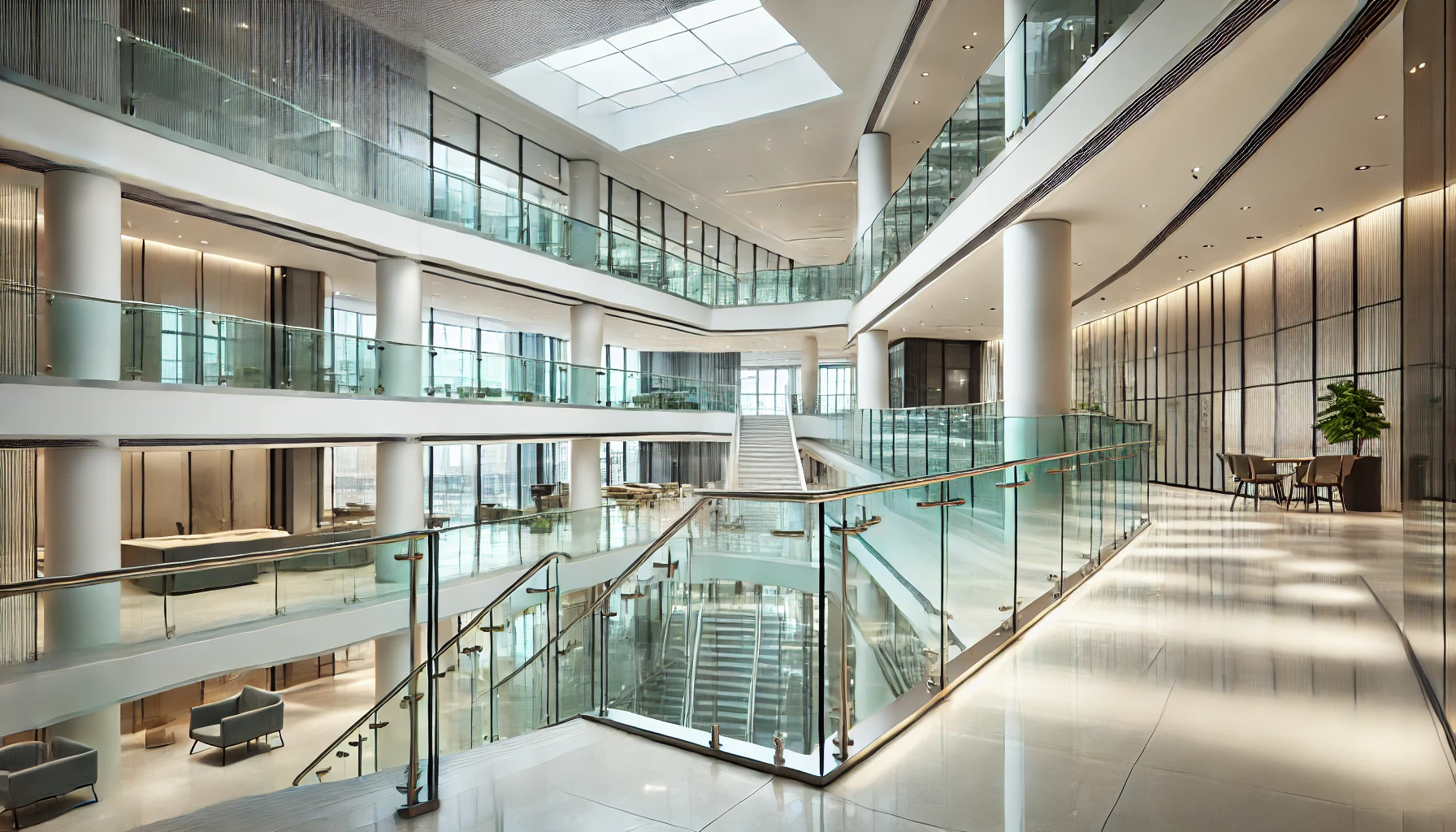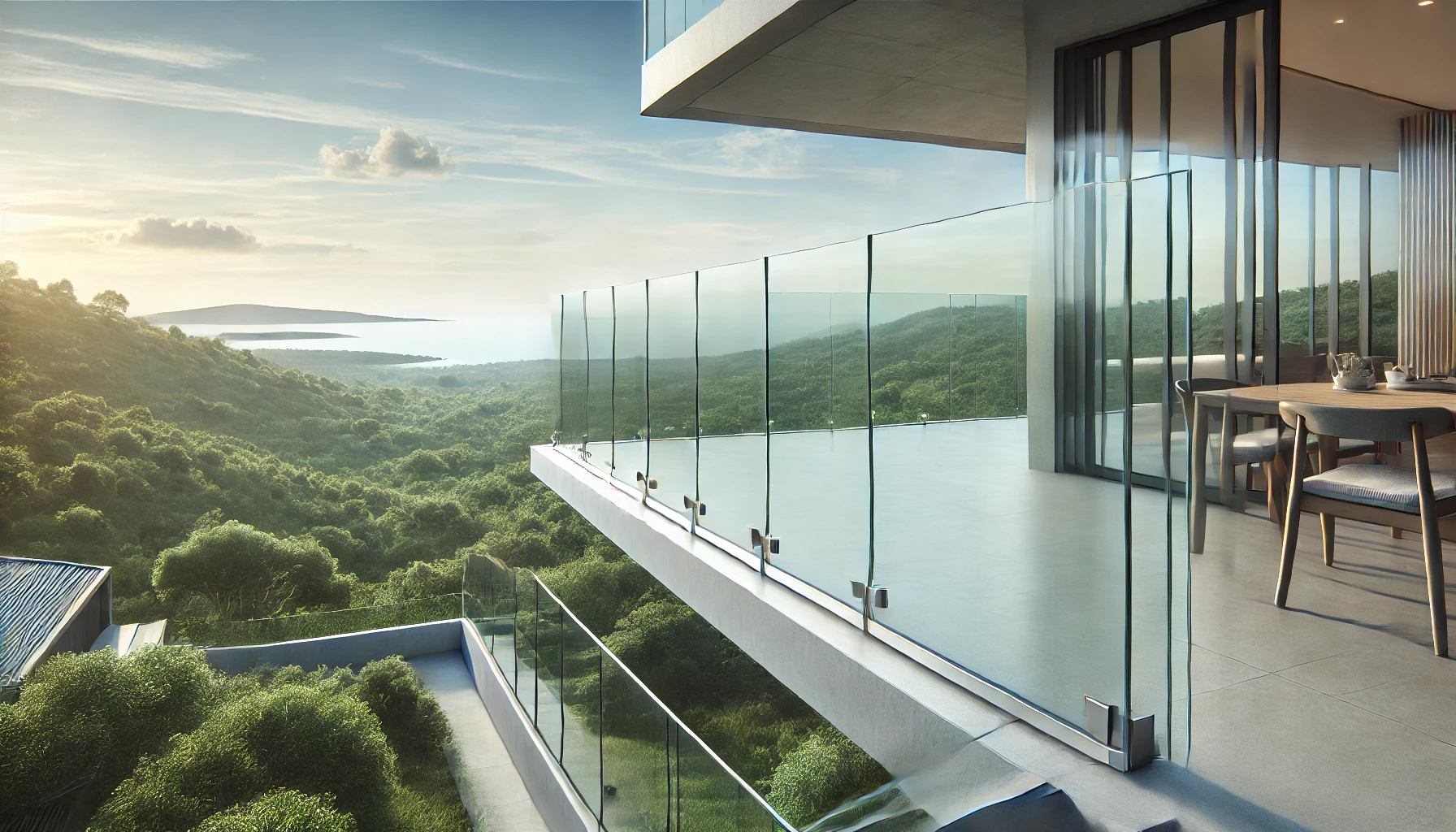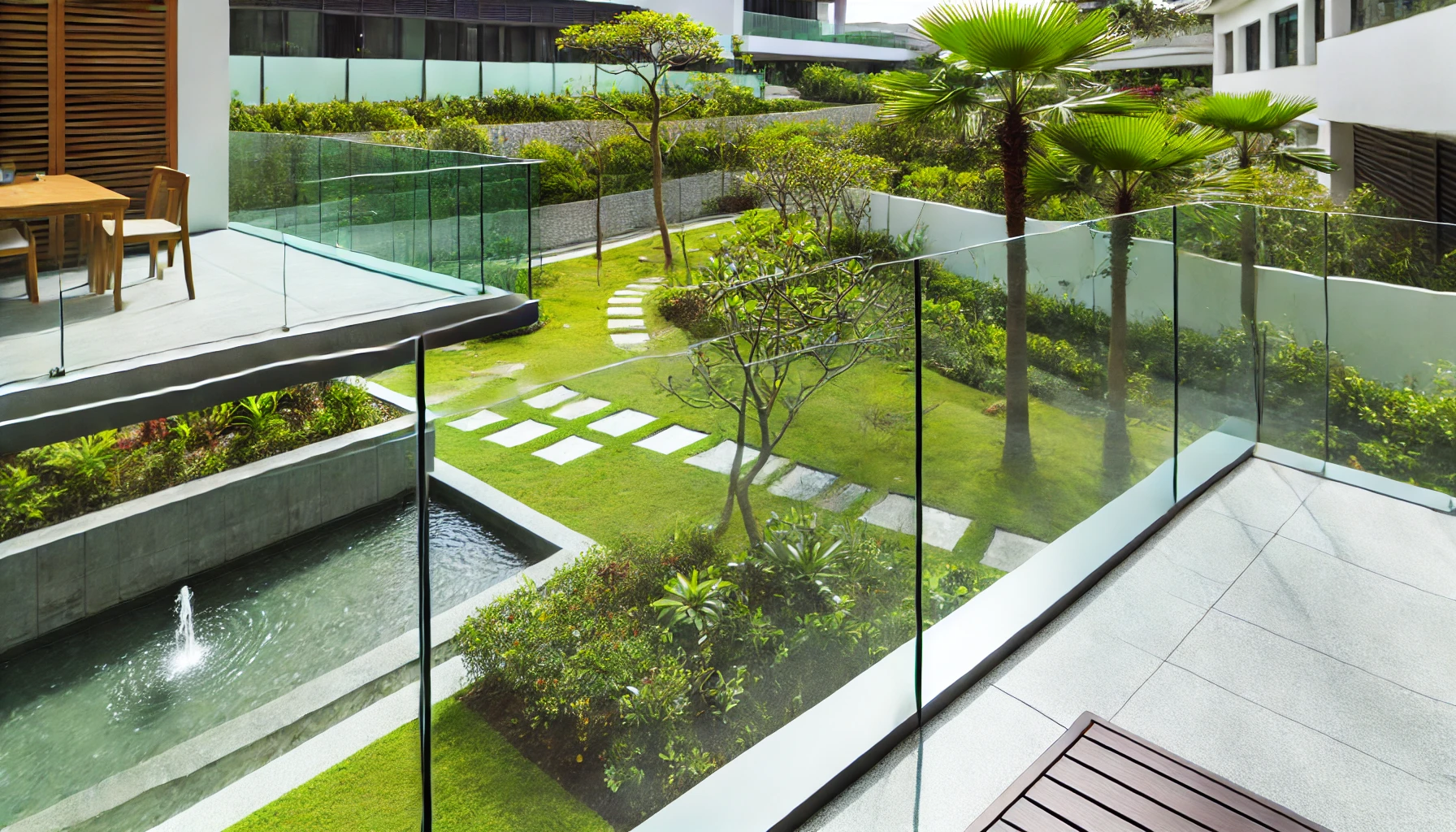Introduction
Glass railings have become a defining feature in modern architecture, known for their sleek design, transparency, and ability to blend seamlessly with various architectural styles. Whether used in residential or commercial spaces, glass railings provide both safety and aesthetic appeal, enhancing the overall environment without obstructing views. This article explores how glass railings integrate with modern architectural styles, highlighting current design trends and presenting case studies that demonstrate their versatility.
1. The Role of Glass Railings in Modern Architecture
In modern architecture, the emphasis is often on creating open, light-filled spaces that promote a sense of connection between indoor and outdoor environments. Glass railings perfectly align with these principles, offering a minimalist yet functional design element that complements a variety of architectural styles.
- Transparency and Openness: Glass railings allow for unobstructed views, which is particularly important in designs that emphasize natural light and connection to the outdoors. Whether installed on balconies, staircases, or mezzanines, glass railings contribute to the feeling of openness and space.
- Versatility in Design: Glass railings are versatile and can be tailored to suit different architectural styles, from ultra-modern and minimalist to more traditional or transitional designs. The simplicity of glass allows it to blend with almost any material, including wood, metal, and concrete, making it a popular choice in diverse settings.
- Safety and Durability: Despite their delicate appearance, glass railings are designed to meet stringent safety standards. They are typically made from tempered or laminated glass, which is strong and resistant to impact. This combination of safety and aesthetic appeal makes glass railings a preferred choice in modern architecture.
2. Design Trends in Glass Railings
The integration of glass railings into modern architectural design has led to several key trends that are currently shaping the industry. These trends reflect the evolving preferences of architects and homeowners alike.
- Frameless Glass Railings: One of the most popular trends is the use of frameless glass railings. This design eliminates the need for bulky posts or rails, allowing the glass to appear as if it is floating. Frameless railings are particularly favored in minimalist and contemporary designs, where the goal is to achieve a clean, uncluttered look.
- Mixed Materials: Combining glass with other materials is another trend that has gained traction. For instance, glass panels paired with wooden handrails or metal posts can create a striking contrast that adds warmth and texture to the space. This approach allows for greater customization and can be adapted to suit various design themes.
- Tinted and Frosted Glass: While clear glass is the most common choice, there is growing interest in using tinted or frosted glass for railings. Tinted glass can add a subtle color to the design, while frosted glass provides privacy without sacrificing the open feel of the space. These options are particularly useful in areas where privacy is a concern, such as in residential balconies or office partitions.
- LED-Integrated Glass Railings: The integration of LED lighting into glass railings is a trend that combines functionality with style. LED lights can be embedded within the railing system to create a soft glow along the edges of the glass panels. This not only enhances safety by illuminating pathways but also adds a dramatic visual effect, particularly at night.
3. Case Studies: Glass Railings in Modern Architecture
To better understand how glass railings are used in modern architecture, let’s explore a few case studies that demonstrate their versatility and impact.
- Case Study 1: Residential Penthouse in New York City
In this luxury penthouse located in the heart of New York City, glass railings were used extensively to maximize the stunning views of the skyline. Frameless glass railings were installed on the balcony and along the interior staircase, creating a seamless transition between indoor and outdoor spaces. The use of clear glass maintained the apartment’s open and airy feel, while the minimalist design complemented the contemporary interior decor. - Case Study 2: Coastal Villa in California
A coastal villa in California utilized glass railings to enhance its connection to the surrounding natural beauty. The outdoor deck, which overlooks the ocean, features tinted glass railings that reduce glare from the sun while maintaining an unobstructed view of the water. The glass panels were paired with stainless steel posts, offering a modern and durable solution that withstands the coastal elements. Inside the villa, frosted glass railings were used to provide privacy for the upper-level bedrooms without compromising the flow of natural light. - Case Study 3: Corporate Office Building in London
In a corporate office building in London, glass railings were integrated into the design to create a sleek, professional environment. The central atrium, which spans several floors, is surrounded by frameless glass railings, allowing light to penetrate deep into the building. The railings are equipped with LED lighting, which not only highlights the modern design but also ensures safety during evening hours. The combination of glass and light creates a sophisticated atmosphere that reflects the company’s commitment to innovation and excellence.
4. Practical Considerations for Integrating Glass Railings
While the aesthetic benefits of glass railings are clear, there are several practical considerations to keep in mind when integrating them into a modern architectural design.
- Building Codes and Safety Regulations: It’s essential to ensure that glass railings comply with local building codes and safety regulations. This includes selecting the appropriate glass thickness, mounting system, and handrail requirements. Working with experienced professionals who understand these regulations is crucial to achieving a safe and compliant installation.
- Maintenance Requirements: Glass railings require regular maintenance to keep them looking their best. This includes cleaning the glass panels to remove fingerprints, dust, and other residues. In outdoor settings, additional maintenance may be needed to protect the glass and hardware from environmental factors such as saltwater or pollution.
- Budget Considerations: While glass railings can elevate the design of a space, they can also be more expensive than other railing materials. It’s important to consider the budget for the project and weigh the long-term benefits of glass railings, such as their durability and low maintenance, against the initial cost.
5. The Future of Glass Railings in Modern Design
As architectural trends continue to evolve, the use of glass railings is expected to grow, driven by advancements in material technology and design innovation. Future developments may include the use of smart glass, which can change its opacity or color in response to environmental conditions, further enhancing the functionality of glass railings. Additionally, sustainable design practices are likely to influence the choice of materials and manufacturing processes, leading to more eco-friendly glass railing options.
Conclusion
Glass railings are a versatile and elegant solution that can seamlessly integrate with a wide range of modern architectural styles. Whether used in residential, commercial, or public spaces, they offer a unique combination of safety, functionality, and aesthetic appeal. By staying informed about the latest design trends and understanding the practical considerations involved, architects and designers can continue to push the boundaries of what is possible with glass railings, creating stunning environments that inspire and delight.







